Pete’s Gear: Harmony Sovereign H-1270 12-string acoustic guitar
Pete Townshend’s Harmony Sovereign H1270 12-string acoustic guitar, as used in the studio and television performances in the ’60s. The Harmony H1270 — a 12-string version of Harmony’s H1260 — featured a hinged nickel-plated trapeze tailpiece and jumbo body in natural finish. It can be heard on recordings such as Sunrise and Sparks/Underture from Tommy.
Pete likely used a capo on this guitar frequently, as it was — and is — common to tune down 12-strings a half or whole step, to decrease the tension and make chord fingering easier. The guitar is then brought back to standard tuning with the capo.
Whereabouts
Sold by Pete in 1997 or 1998 to benefit the Maryville Academy in Chicago. Currently owned by private collector.
Unique features
- Trapeze tailpiece – which allows the guitar to have very light bracing and fairly low string tension.
- Double bridge – two ivory bridges: One that the strings pass over, the other a sort of “faux bridge,” which the strings pass through.
These features combine to give the guitar a unique, transparent sound.
Specification
From the Harmony Database:
1966 catalog
Harmony Jumbo Model – 12-string guitar – Mahogany – Spruce Top
A deluxe model for those who have learned to appreciate the richness and full toned response of the 12-string guitar, with its pairs of strings tuned in unison, or an octave apart. Large deep body has polished natural finish selected spruce top, carefully braced. Back, sides and neck are of selected mahogany. Torque-Lok adjustable reinforcing rod. Rosewood ovalled fingerboard and bridge. Nickel-plated hinged tailpiece. Smartly bound and inlaid with shell-color and white celluloid.
No. 1270 – Size: 16 × 4 5/16 × 40 1/2 in.: $139.50
No. C550 – Carrying Case, extra: $16.00
Caution – A 12-string guitar should not be tuned up to regular 6-string guitar pitch. Experienced players recommend tuning three or four half tones lower, to avoid pulling up the guitar top or bowing the neck.
Selected quotes
All quotes and references are copyright their original owners and are included for reference only.
From 2010 Acoustic magazine interview:
- I understand your favourite acoustic guitar is the Gibson J-200. Have you always played Gibson guitars? Do you play any other acoustics other than the J-200?
My first good guitar was an acoustic made in Prague. Later I bought a Harmony 12-string that became my staple. I was a huge fan of Leadbelly, and the Harmony was as close as I could get to his big Stella.
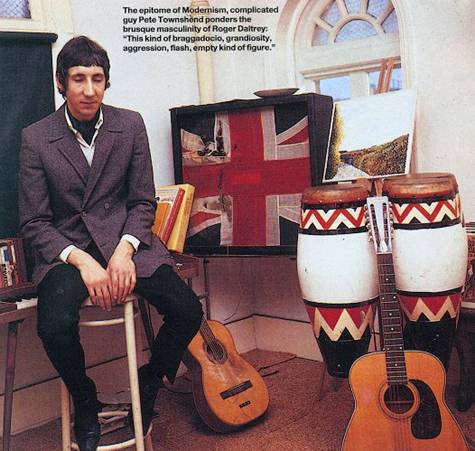
Wardour Street home studio, ca. 1966 or 1967, with Harmony 12 at right. Speaker cabinet is early Marshall 4×12 on stand.
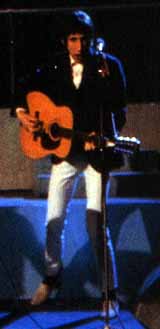
Ca. 1966, with the Harmony 12 during television performance.
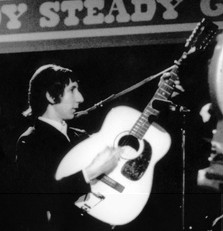
Ca. 1966, with the Harmony 12 during television performance.
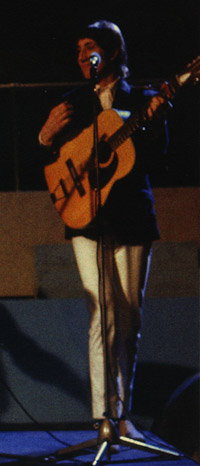
Ca. 1966, with the Harmony 12 during television performance. Note red capo at 2nd fret.
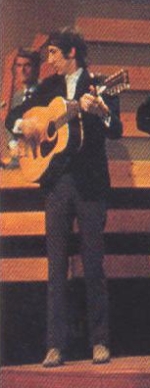
Ca. 1966, with the capoed Harmony 12 during television performance.
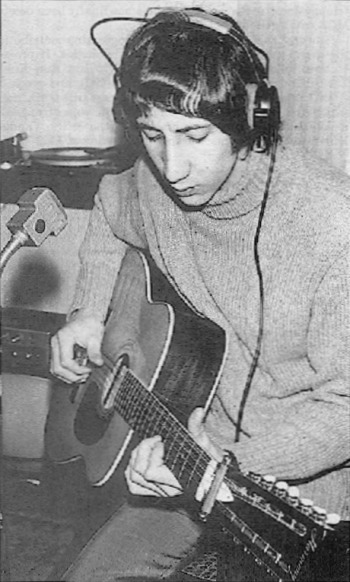
Ca. 1967, home studio, recording with the Harmony 12; C-style capo unused at the headstock.
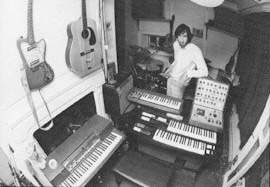
Ca. 1970, home studio, with Harmony 12 on the wall.
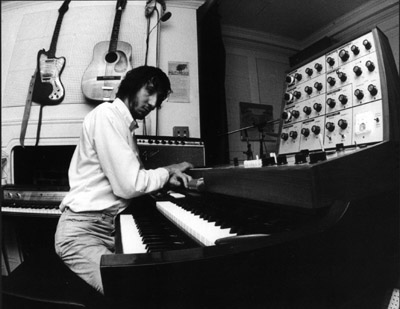
Ca. 1970, home studio, Twickenham, with the Harmony 12-string hung on wall at right. (Guitar at left is Coral Hornet.)
Resources and Information
Acknowledgements
- Dave Goessling
- Brad Rodgers at whocollection.com.
Additional information:
- Harmony Database – H1270 – Sovereign jumbo 12-string: harmony.demont.net/model.php?id=49
- Harmony Flat Top acoustic guitars history: broadwaymusicco.com/harmony.htm
- Harmony Sovereign models: broadwaymusicco.com/Harmony1.htm